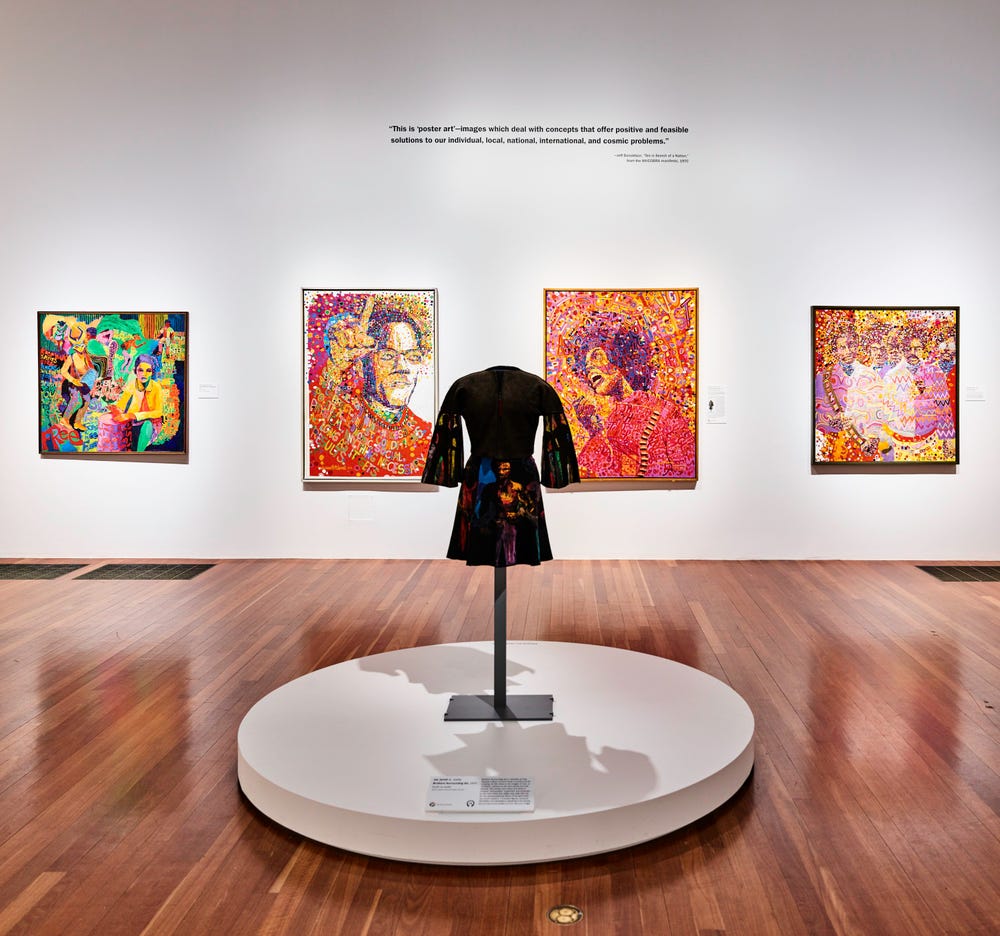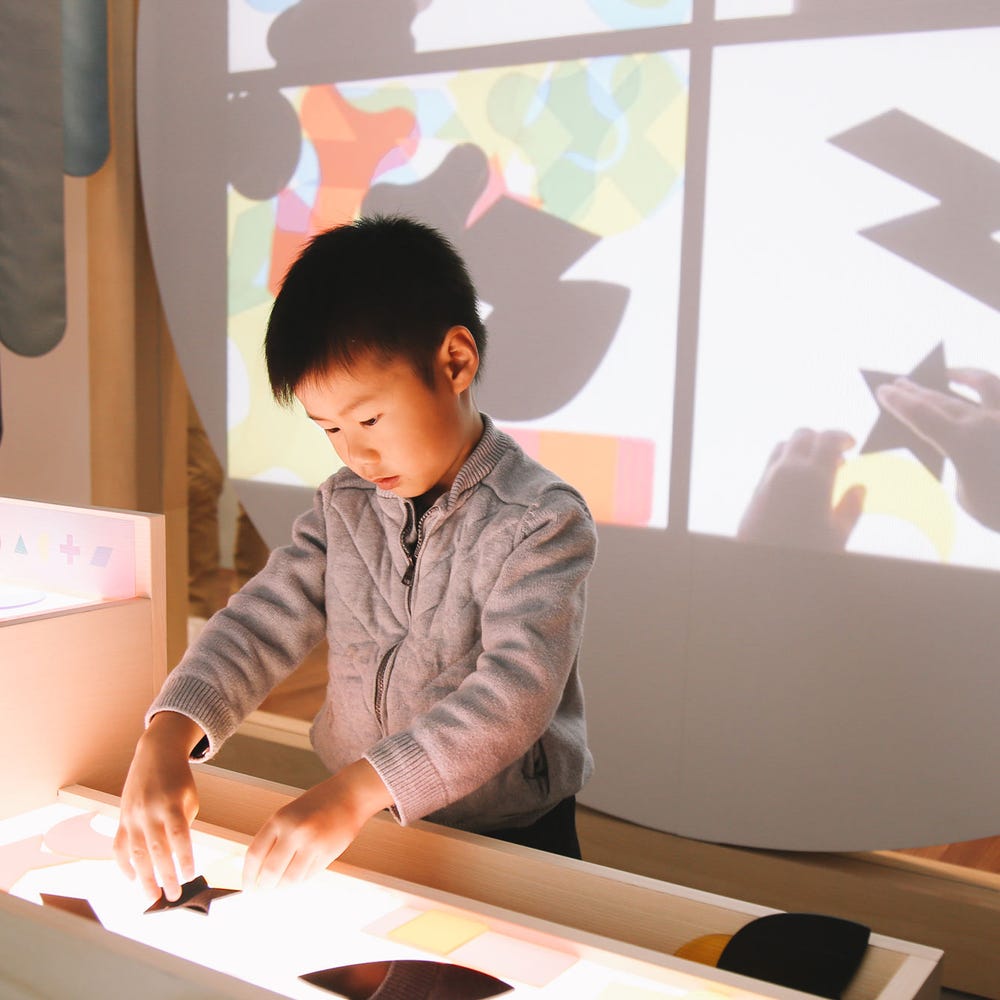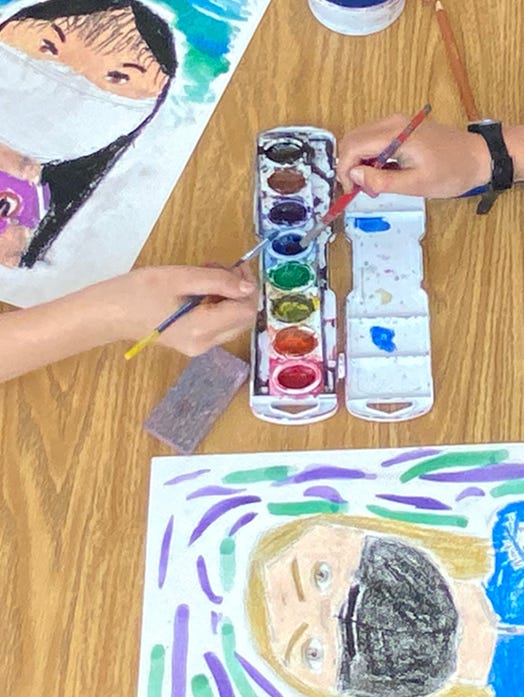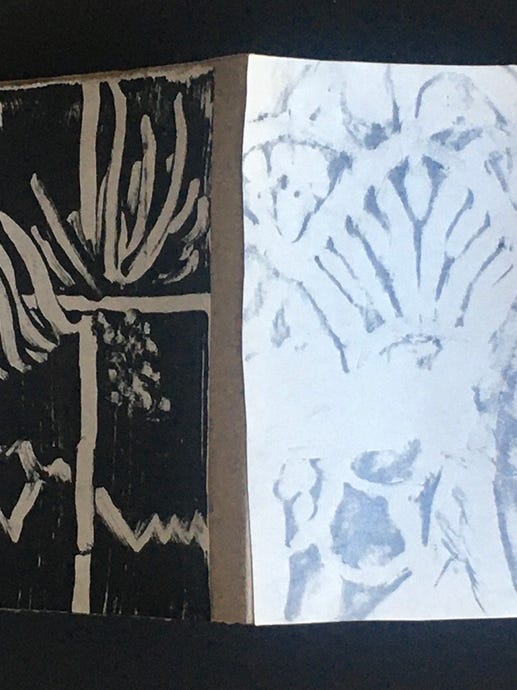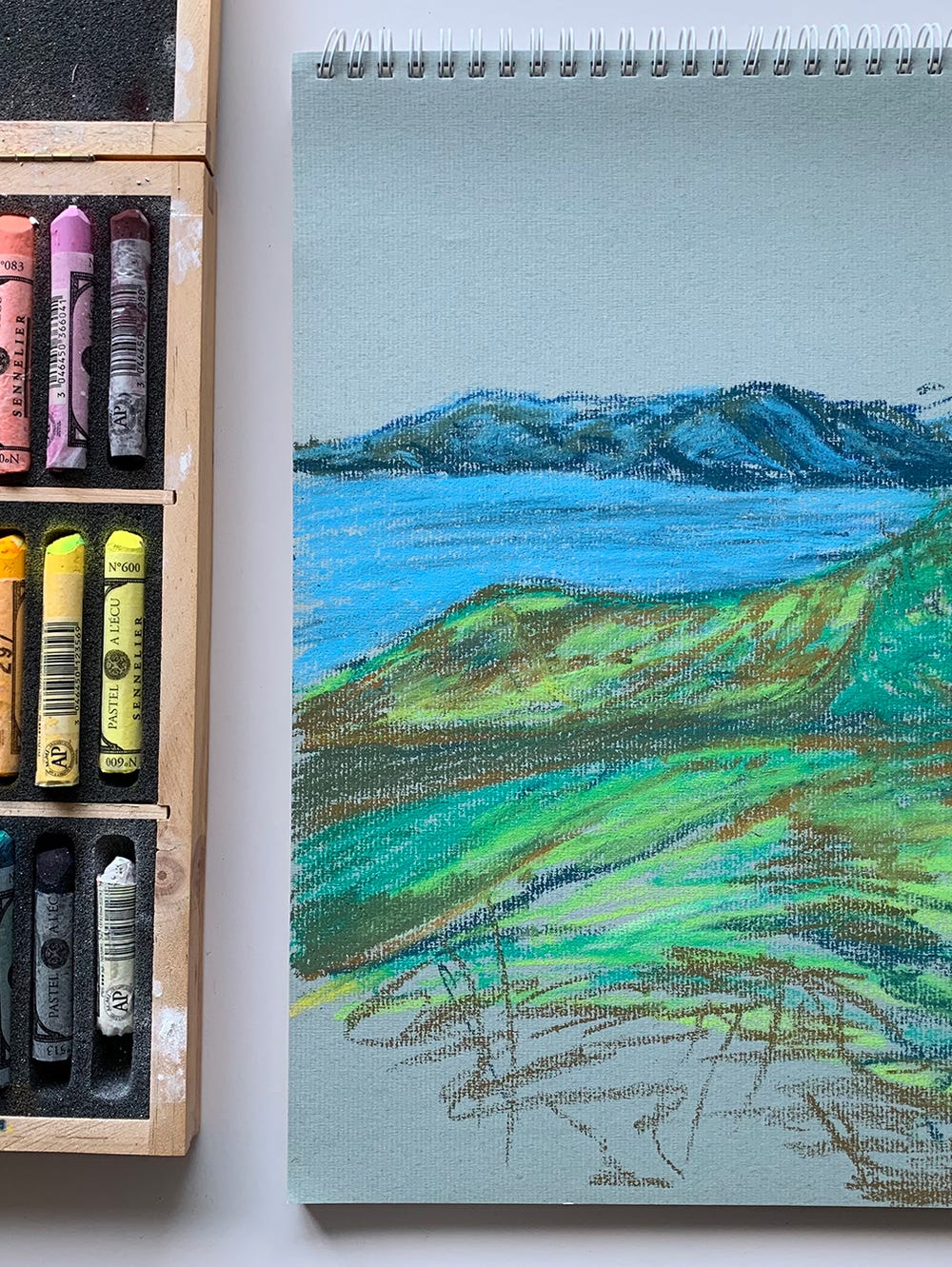Over the past few weeks, it has become increasingly unavoidable to see how our country is impacted by inequality and injustice, specifically within the Black community. Building a society that upholds humanity begins with conversations at home about race, power, and equity. This project grew out of the work by the artists from the AfriCOBRA collective, included in the exhibition Soul of a Nation: Art in the Age of Black Power 1963 – 1983 recently at the de Young. Their works of art, created in the 1960s and 1970s, celebrates Black identity using text, color, and pattern to advance self-confidence and solidarity. We encourage your entire family to engage in this project to create personal anti-racist messages that express your individual points of view.
Installation image from the Fine Arts Museums of San Francisco presentation of Soul of a Nation: Art in the Age of Black Power 1963 – 1983 (November 9, 2019 – March 13, 2020).
Materials
- Crayons
- 9x12 paper, white tagboard, or watercolor paper
- Liquid watercolors (or diluted food coloring/watercolor pans), brushes, and water cup
- Black permanent felt-tip pen/pencil/spare paper (optional)
Word bank
Respect / Education / Understanding / Community / Together / Fairness / Freedom / Equality / Equity / Opportunity / Anti-Racism / Power
Questions to consider
Many of these words represent values inherent to anti-racist thinking. What other words would you like to add to the list? Which words do you connect with most and why? Circle the word that has the most impact for you. Circle up to two more that may strengthen your message.
Steps for project
- Together, with your family, select two or three words from the word bank. Discuss each word and what it means to you from your perspective — your understanding and response may differ from someone else’s.
- Before you write the word somewhere on your paper, consider how big or small you make the lettering and how you position it on the page. Use another piece of paper to experiment with how size and shape change the impact of your words. Additional compositional questions to consider include:
- Will the letters be in a straight line from left to right? Or will they be curved?
- Will they start small and get bigger across the page?
- Can you make “bubble” lettering?
- All of these decisions affect how the word and its meaning are noticed and emphasized.
- Take a moment to think about your words. Are there any others you might want to include?
- Get started on your final composition: you may wish to dive straight in and write in black marker or crayon, or you may decide to use a pencil to plan your composition.
- What do you notice about how the words look on the page?
- How can you use crayons to add color, pattern, and repetition to draw attention to the words?
- Do you want to use just one or two colors, or lots of different colors? How does color affect how we feel? How might color affect the mood of the artwork?
- Many artists in the AfriCOBRA collective used color to emphasize their message in an explosive, joyful celebration of Black identity. Using crayons, make patterns of lines and shapes in and around the letters. Later, you will add a watercolor wash over the composition. You may wish to draw or write something with white crayon that will be made visible with the color wash — be sure to leave some of the white paper showing too, as this will pick up the color from the watercolor wash.
- Applying the wash: The watercolor wash fills in the unmarked parts of the paper, creating a background that highlights the words, ideas, and patterns. This technique is called “wax resist.” Load your brush with watercolor, then paint over your entire composition; instead of being covered up by paint, the wax crayon repels the watercolor wash. Only the blank paper absorbs the color wash, providing a colorful contrast to the drawn words and motifs. It also makes any invisible white crayon markings visible. Consider the crayon colors you have already used; will you use a different color for the watercolor wash? Will you use just one watercolor, or several?
Reflect
Take a few moments to look at your finished artwork and its composition. Think back to your initial conversation about values and message. What important takeaways do you have from that discussion? What did you learn about the creative process and the forum it provides for further conversation and contemplation?
Share
Consider sharing your message with your community in a window at home or in your car. Conversations allow us to voice our ideas as well as make space to listen and be supportive.
We would love to see what you make too, so please tag us on any social media platform using the hashtag #deyoungsters or email us at families@famsf.org.
Adapted from original lesson plan by Heide Miller, Senior Teaching Artist.
